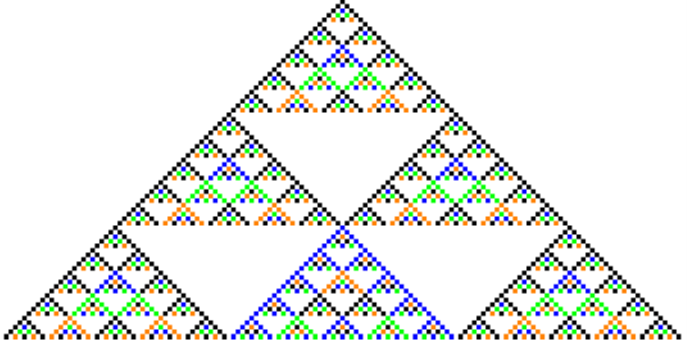The book “Cellular Automation and Binomials” offers a comprehensive guide to the field of cellular automata and their connection to the binomial coefficients.
Chapter 1 introduces cellular automata, the underlying fundamental principles, the rules, and basic notions as configuration width, state and dimension.
Chapter 2 delves into elementary cellular automata. This section covers topics like the transition equation, uniqueness, generating functions, cycles, and unreachables.
In Chapter 3 we turn to modular cellular automata. This chapter focuses on modular addition in one and two dimensions, along with topics such as tabulation of periods, preperiodic points, and the famous Game of Life.
Chapter 4 is dedicated to Pascal’s triangle and its connection to binomial coefficients. We also consider the Sierpinski triangle, the discrete Sierpinski triangle, Pascal’s triangle modulo q, skewed triangles, Gould’s sequence, skewed Pascal’s triangle modulo q, and Kummer’s method.
Chapter 5 takes an in-depth look at the properties of binomials. We explore series in Pascal’s triangle, the Stern series, divisors of products of binomials, a multiplicity conjecture, and the relationship between binomials and pi.
Finally, in Chapter 6, we delve into the divisibility aspects of binomials. This section provides an introduction to the topic, followed by an algorithm for SW-pairs, a discussion on the number of SW-pairs, confining to prime divisors of n, an algorithm for covering sets of prime divisors of n, primorials, and distributions.
The book includes three appendices. Appendix A offers a proof of Kummer’s theorem. Appendix B provides insights into p-adic numbers, including infinite repetitions, 10-adic zero divisors, and an exploration of p-adic numbers themselves. Appendix C concludes the book with two binomial identities.
Open the pdf and read it for free.

